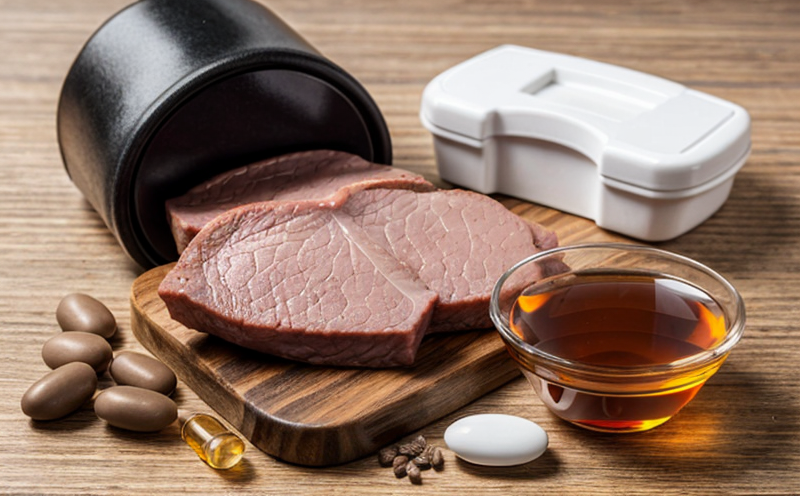Veterinary Feed Enzyme Induction Testing
The veterinary feed enzyme induction testing is a critical component in ensuring that animal feeds are optimized for nutritional efficiency and safety. This service involves the precise measurement of enzyme activity levels within feed formulations to determine their potential impact on digestive processes, particularly focusing on liver function enzymes.
In this context, liver function enzymes play a vital role as indicators of overall health and digestive capability in animals. By conducting these tests, laboratories can identify which enzymes are most effective at breaking down specific components of the feed, such as proteins or carbohydrates. This information is essential for formulating feeds that not only meet nutritional standards but also enhance animal performance.
The testing process begins with selecting appropriate samples from various sources and batches to ensure a representative dataset. Once collected, these samples undergo rigorous preparation steps which include homogenization followed by extraction procedures designed to isolate the relevant enzymes without causing degradation or loss of activity. This meticulous approach ensures accurate results that reflect real-world conditions.
After sample preparation, analyses are carried out using advanced analytical techniques including but not limited to high-performance liquid chromatography (HPLC), ultraviolet-visible spectroscopy (UV-Vis), and enzyme-linked immunosorbent assays (ELISAs). These methods provide precise measurements of enzyme activities under controlled conditions that simulate typical digestive environments. Results from these tests are then compared against established thresholds defined by relevant international standards like ISO 12469 or ASTM E2503 to evaluate compliance with regulatory requirements.
The importance of this service cannot be overstated, especially given the growing demand for sustainable and efficient animal feed production. Accurate assessment of enzyme induction in feeds helps prevent over-supplementation which can lead to adverse effects on animal health while ensuring optimal nutrient utilization. Moreover, it supports efforts towards reducing waste generation by optimizing ingredient proportions based on actual digestive needs rather than theoretical assumptions.
- Ensures compliance with international standards such as ISO 12469 and ASTM E2503.
- Supports sustainable practices in animal feed production through efficient ingredient use.
- Enhances nutritional efficiency by identifying optimal enzyme levels for digestibility.
Why It Matters
The quality and safety of animal feeds are paramount considerations in modern agriculture. Ensuring that feed formulations contain the right balance of nutrients is essential not only for promoting healthy growth but also for preventing health issues within livestock populations.
Veterinary feed enzyme induction testing plays a crucial role in achieving these goals by providing insights into how different components interact with digestive systems. Through careful analysis, we can pinpoint which enzymes are most effective at breaking down particular nutrients and tailor feeds accordingly. This targeted approach ensures that animals receive exactly what they need without unnecessary additives or excesses.
By conducting such tests regularly, producers gain valuable data about the effectiveness of their current formulations and opportunities for improvement. This knowledge can lead to significant cost savings through reduced waste from underutilized ingredients as well as improved animal performance due to enhanced nutrient absorption.
International Acceptance and Recognition
The importance of veterinary feed enzyme induction testing is widely acknowledged across the global industry. Regulatory bodies worldwide have recognized the necessity for accurate measurement techniques that adhere strictly to internationally accepted standards such as ISO 12469.
Countries like the United States, European Union member states, and various other nations mandate compliance with these guidelines when evaluating feed quality and safety. The adoption of these practices reflects a commitment to maintaining high standards of animal welfare while supporting sustainable agricultural practices.
Organizations responsible for setting industry benchmarks also emphasize the significance of this testing method. For instance, organizations like the World Organization for Animal Health (OIE) recommend that member countries adopt consistent methodologies to ensure comparability of results across borders.
Competitive Advantage and Market Impact
- Enhances product differentiation by offering superior quality assurance through rigorous testing protocols.
- Promotes brand reputation as a leader in sustainable feed production practices.
- Aids in securing new contracts with international clients seeking proven compliance measures.
- Facilitates innovation by providing actionable insights into ingredient interactions within feeds.





